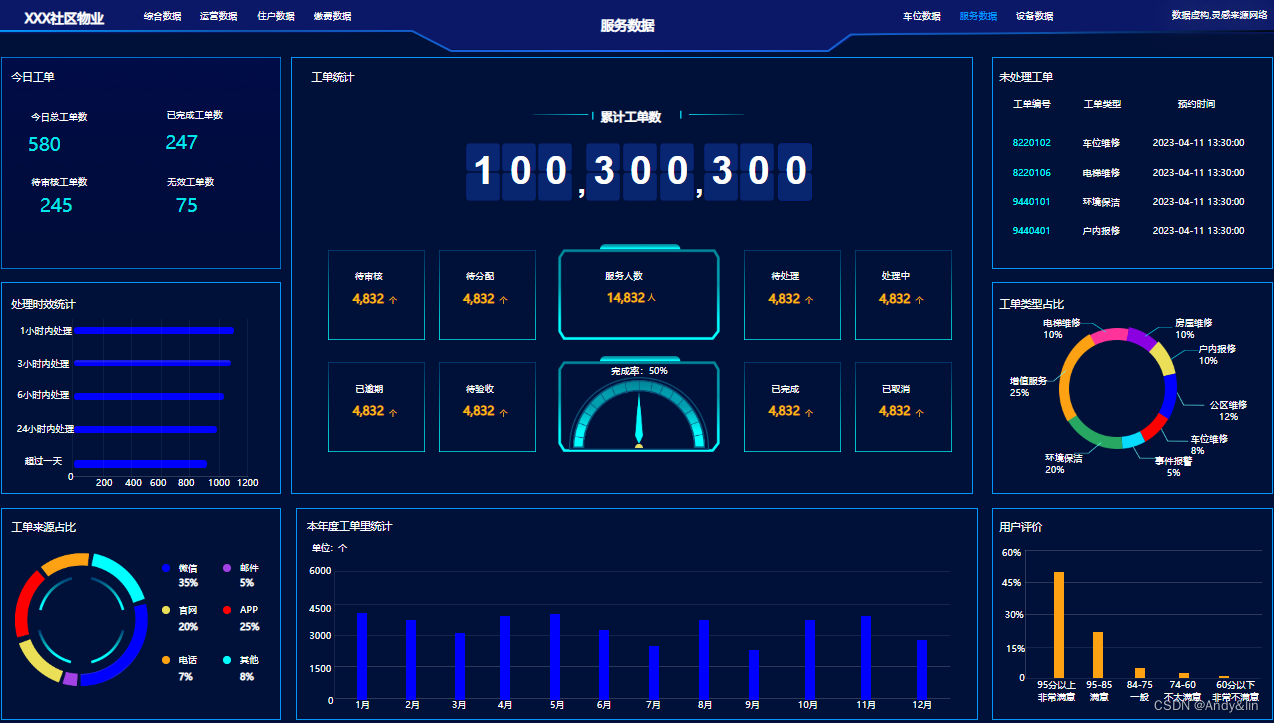文章目录
- 概要
- 1.函数概述
- 2.函数的优缺点
- 3.内置函数分类
- 4.基本语法
- 常用单行函数
- 1.字符串函数
- 2.数学函数
- 3.日期函数
- 4.信息函数
- 5.流程控制函数
- 常用多行函数
- 1.概要
- 2.特点
- 3.示例
概要
1.函数概述
- 一段可以直接被另一端程序直接调用的程序或代码。
- 将一组功能逻辑封装在函数体中,对外暴露函数名。
2.函数的优缺点
-
优点:
- 隐藏了代码实现细节。
- 提高了代码的重用性和简洁性。
-
缺点:可移植性差,类似同能的函数在不同的DBMS中可能函数名不同
3.内置函数分类
- 单行函数:字符串函数、数字函数、日期函数、信息函数、控制函数……
- 多行函数:聚合函数。
4.基本语法
select 函数名(实参列表) [from 表名];
常用单行函数
1.字符串函数
-
长度函数:
length、char_length-
length取字节个数,char_length取字符个数。 -
select length('张三'); # 6 select char_lebgth('张三'); # 2
-
-
拼接函数:
concat-
用来拼接字符串,可以指定以什么拼接
-
# 直接连接 select concat(first_name, last_name) as fillname from employees;# 以'-'连接 select concat(first_name, '-', last_name) as fillname from employees;
-
-
大小写转换:
upper、lower-
upper全部转换为大写,lower全部转换为小写。 -
select upper("Hello World"); # HELLO WORLD select lower("Hello World"); # hello world
-
-
操作子串:
substr、instr-
substr:取子串,索引从1开始# 截取从指定索引处后面所有字符 select substr('good good study', 7); # ood study # 截取从指定索引处指定字符长度的字符 select substr('day day up', 2, 5); # ay da -
instr:取子串出现的位置返回子串第一次出现的索引,如果找不到返回 0select instr('good good study', "good"); # 1 select instr('good good study', "day"); # 0
-
-
去除多余空格、填充到指定长度:
trim、lpad、rpad-
trim:去除多余空格,或某些字符(最前或者最后)。select trim("siu "); # siu select trim('~' from "~~~siu~~~~~ "); # siu~~~~~ -
lpad左填充、rpad右填充select lpad('batman', 10, '*'); # ****batman select rpad('batman', 10, '*'); # batman****
-
-
替换:
replace-
用某些字符串替换掉另一些
-
select 'hello world' as "before", # hello world replace('hello world', 'world', 'mysql') as "after"; # hello mysql
-
2.数学函数
-
四舍五入与取整:
round、ceil、floor-
round四舍五入select round(2.5); # 3 select round(2.4);# 2 -
ceil向上取整、floor向下取整select ceil(2.6); # 3 select floor(2.6); # 2
-
-
截断:
truncate-
达到保留需要的小数位个数的效果
-
select truncate(3.1415926, 2); # 3.14 select truncate(3.1415926, 5); # 3.14159
-
-
绝对值与随机数:
abs()、rand()-
abs取绝对值select abs(-1.414); # 1.414 -
rand取随机数select rand(); # 任意随机数 select round(rand() * 10); # 1~10的随机数
-
3.日期函数
-
取当前日期和时间
now:返回当前系统日期和时间。curdate:返回当前系统日期。curtime:返回当前系统时间。
select now(); # 2023-06-06 09:36:54 select curdate(); # 2023-06-06 select curtime(); # 09:36:56 -
取时间和日期的部分信息
- 日期:year()、 month()、 day()、 monthname()
- 时间:hour()、minute()、second()
- 几种特殊的:
quarter():返回日期对应的季度。weekofyear:返回一年中的第几周。dayofyear:返回一年中的第几天。dayofmonth:返回某月的第几天dayofweak:返回周几(周日是1)
-
时间和秒的相互转换
-
秒数只跟时间有关系,跟日期无关。
-
转化公式:h×3600 + m×60 + s。
-
time_to_sec将时间转化为秒,sec_to_time将秒转换成时间。select curtime(), time_to_sec(now()), sec_to_time(time_to_sec(now())); # 09:46:04 35164 09:46:04
-
-
格式化
-
按照自定义格式显示日期和时间
-
fromt 格式化字符串中的占位符
%Y 年,四位数字 %y 年,后两位数字 %m 月 ,数字[1-12] %M 月名 %d 日,月份里的第几天,两位数字[1-31] %D 带有英文前缀的月中的天 %H 小时,24进制 [0-23] %h 小时,12进制[0-11] %i 分钟 [0-59] %s | %S 秒 0-59 -
date_format(date, format):格式化日期select date_format(now(), '%m/%d-%y') from dual; # 06/06-23 -
time_format(date, format):格式化时间selecttime_format(curtime(), '%h 点 %i 分 %s 秒') from dual; # 09 点 55 分 05 秒
-
-
字符串转日期:
str_to_dateselectstr_to_date('2000-1-2', '%Y-%m-%d'),str_to_date('May 1, 2023', '%M %d,%Y') from dual; # 2000-01-02 2023-05-01
4.信息函数
version查询 MySQL 版本号user查询当前登录的账户database查询当前使用的数据库
5.流程控制函数
-
if函数-
语法:
if(expr, trueValue, falseValue) -
select if(10 < 5, 'true', 'false') as "10 < 5"; #false
-
-
case函数-
语法
case [field_x]when XX then [statement-1]when XX then [statement-2]...else [statement-n] end -
当XX为具体值时需要
case [field_x],当XX为条件表达式时需要case/** 查询员工的工资、部分编号和 new_salary,其中 new_salary 的计算如下* 部门编号如果是 30,new_salary 为 1.2 倍工资* 部门编号如果是 40,new_salary 为 1.25 倍工资* 部门编号如果是 50,new_salary 为 1.3 倍工资* 其他部门,new_salary 为原工资 */select salary, department_id,case department_idwhen 30 then salary*1.2when 40 then salary*1.25when 50 then salary*1.3else salaryend as new_salary from employees;/** 查询员工的名字、工资以及工资级别 grade,grade 计算如下* 如果工资大于 20000,grade 为 A 级* 如果工资大于 15000,grade 为 B 级* 如果工资大于 10000,grade 为 C 级* 否则,grade 为 D 级 */select first_name, salary,casewhen salary > 20000 then 'A'when salary > 15000 then 'B'when salary > 10000 then 'C'else 'D'end as grade from employees;
-
常用多行函数
1.概要
- 多行函数又称为聚合函数。
- 用做统计使用。
- 分类:
sum求和、avg平均值、max最大值、min最小值、count计算个数。
2.特点
- sum、avg 一般用于处理数值型。
- max、min、count 可以处理任何类型。
- 以上分组函数都忽略 null 值。
- 可以和 distinct 搭配实现去重的运算。
- 和分组函数一同查询的字段要求是 group by 后的字段。
3.示例
-
简单使用
selectsum(salary),avg(salary),min(salary),max(salary),count(salary) from employees; -
与
distinct搭配去重selectsum(distinct salary),avg(distinct salary),min(distinct salary),max(distinct salary),count(distinct salary) from employees; -
关于
count函数count(expression):返回不包含NULL值的行数。count(*):返回的结果集中的行数,包含NULL值的行数,即所有行。count(distinct expression):返回不包含NULL值的唯一行数。
静静的听,有个声音在说爱你。 ——海龟先生《男孩别哭》





